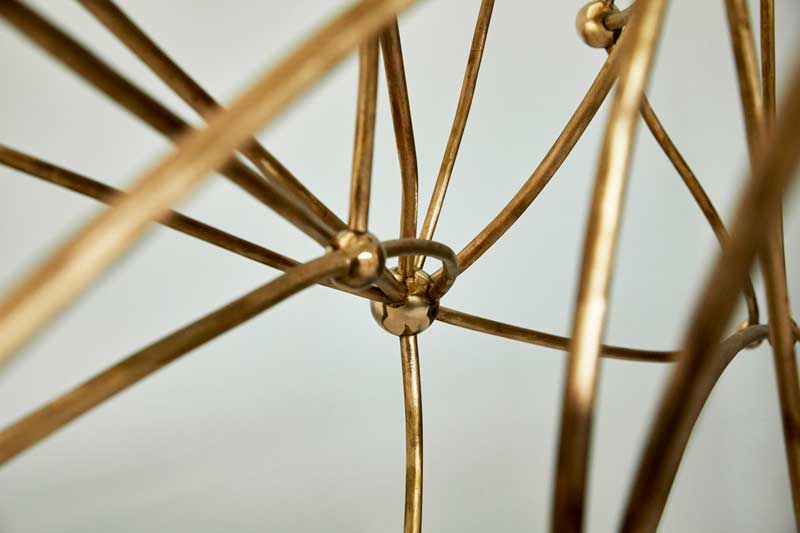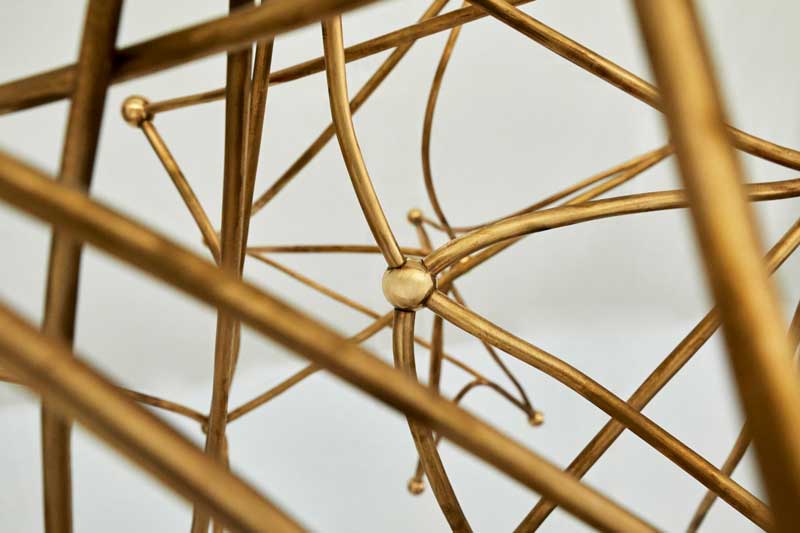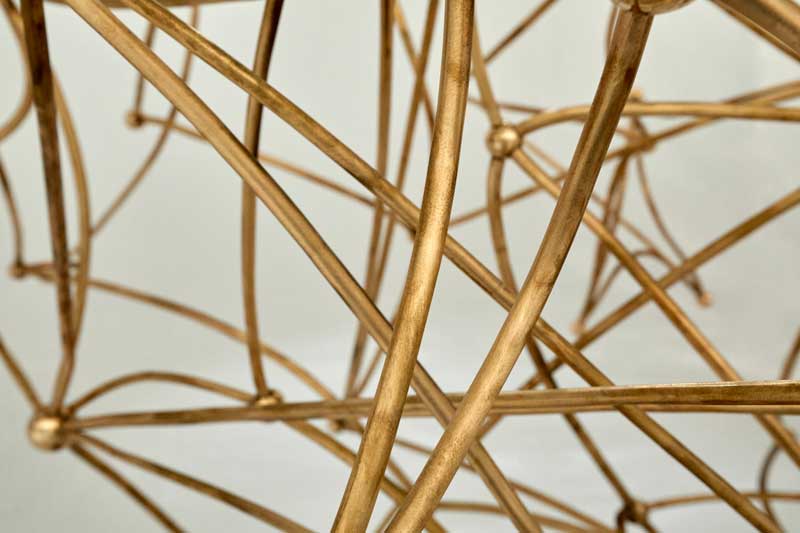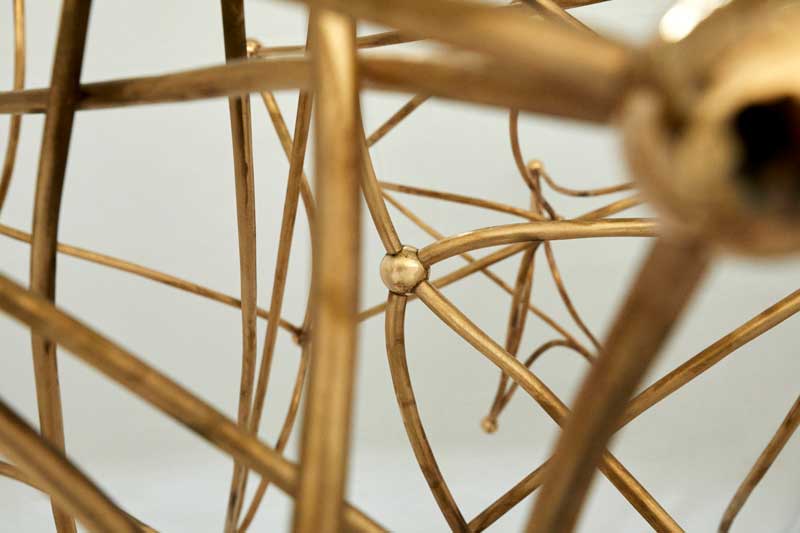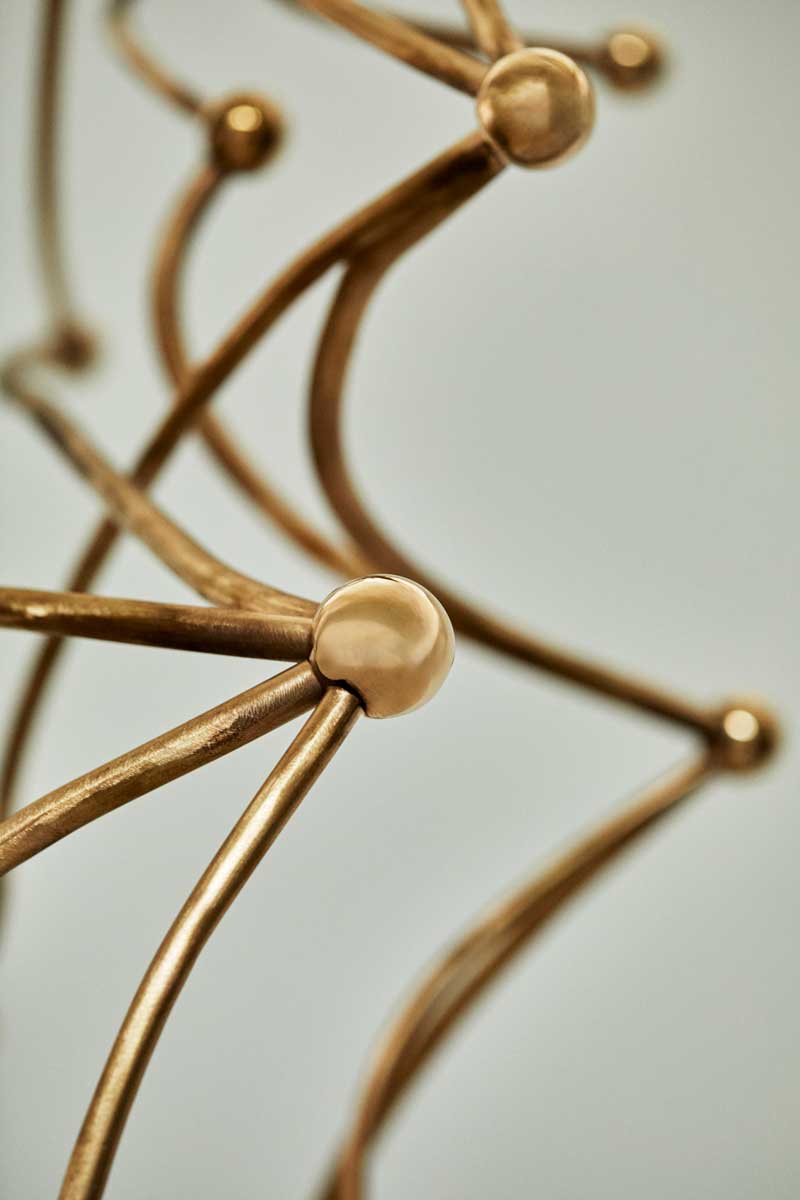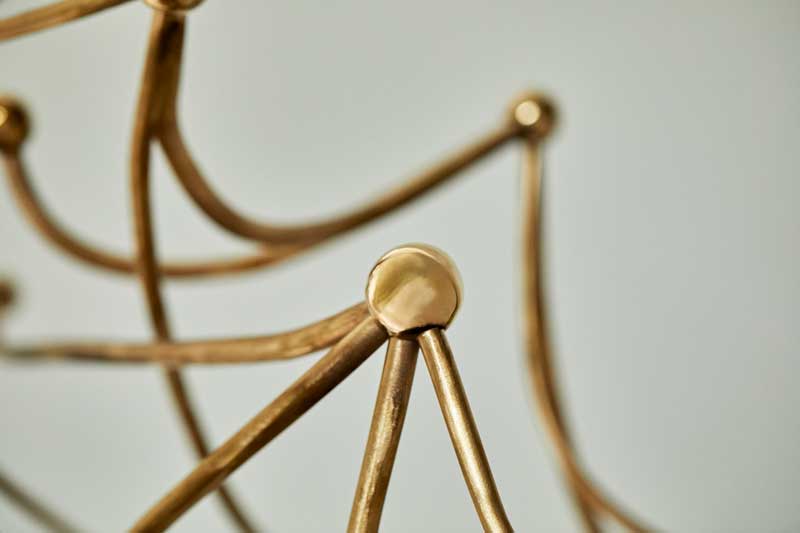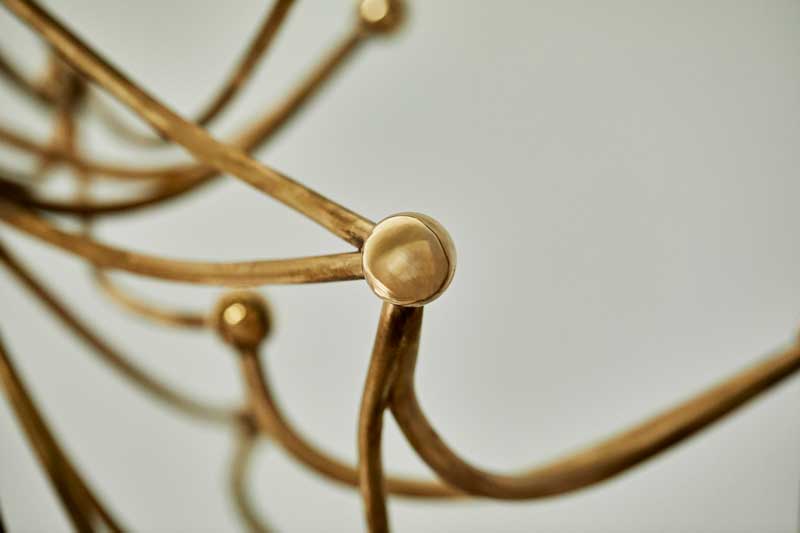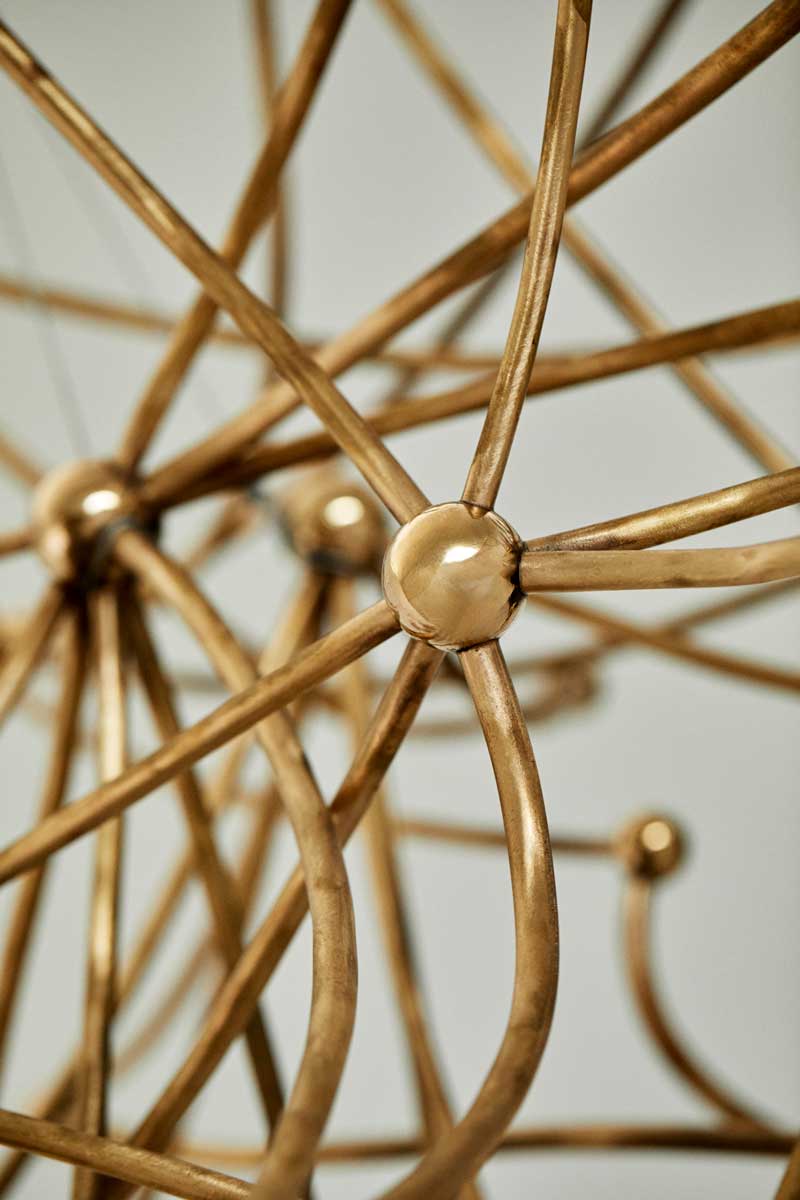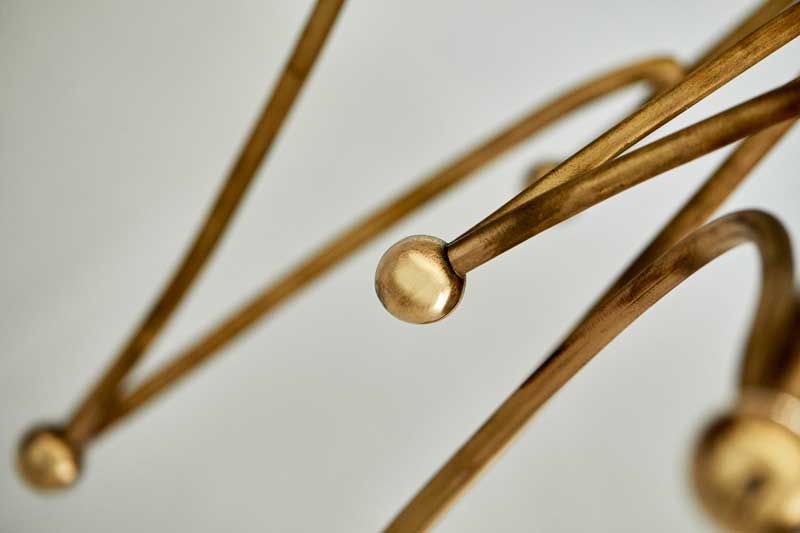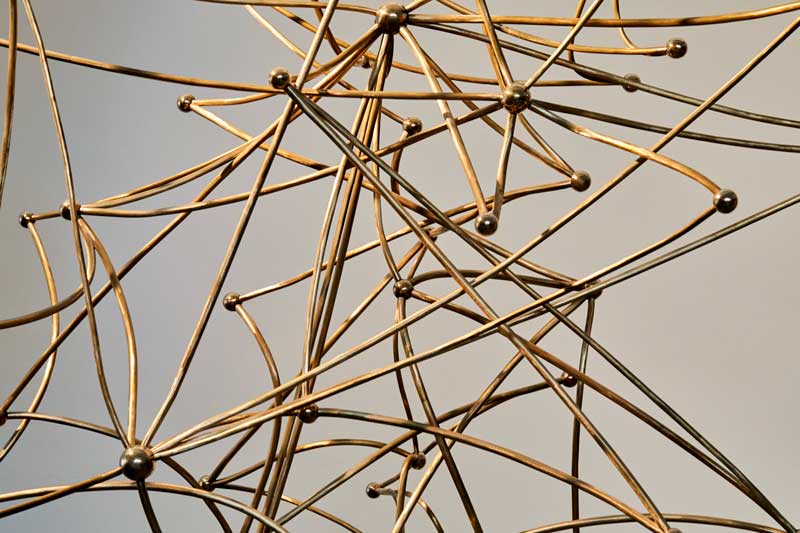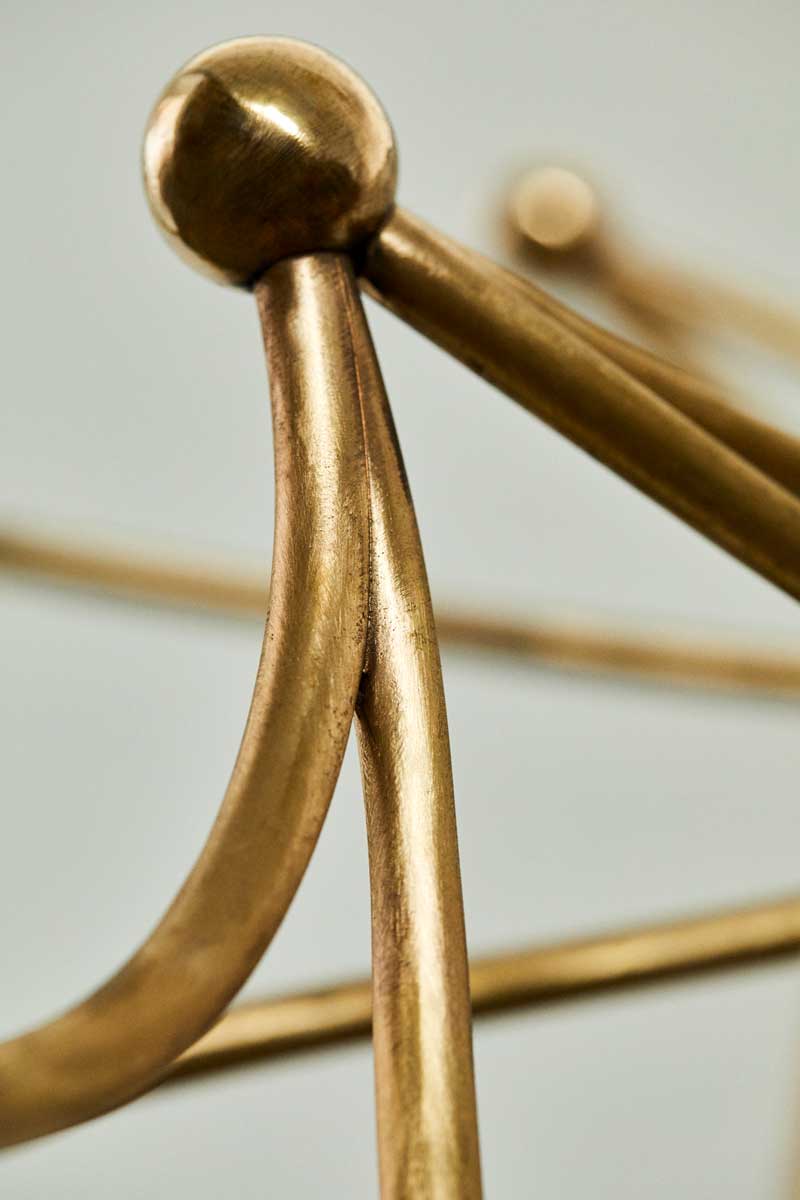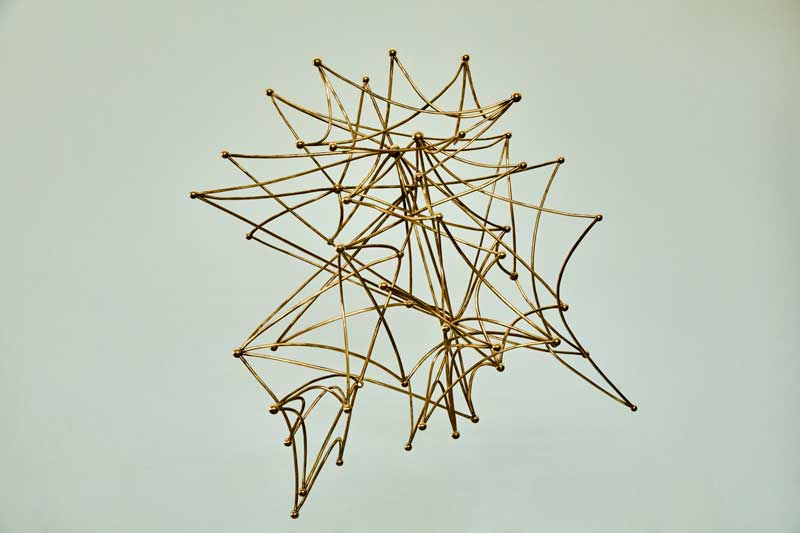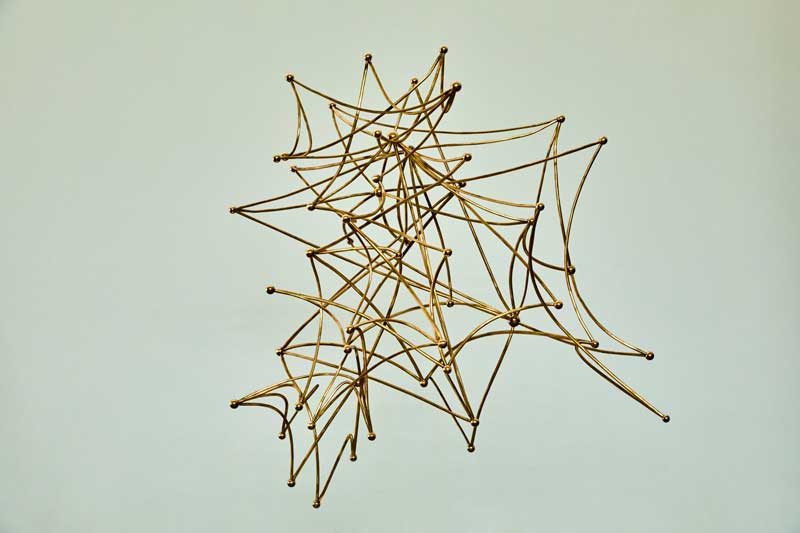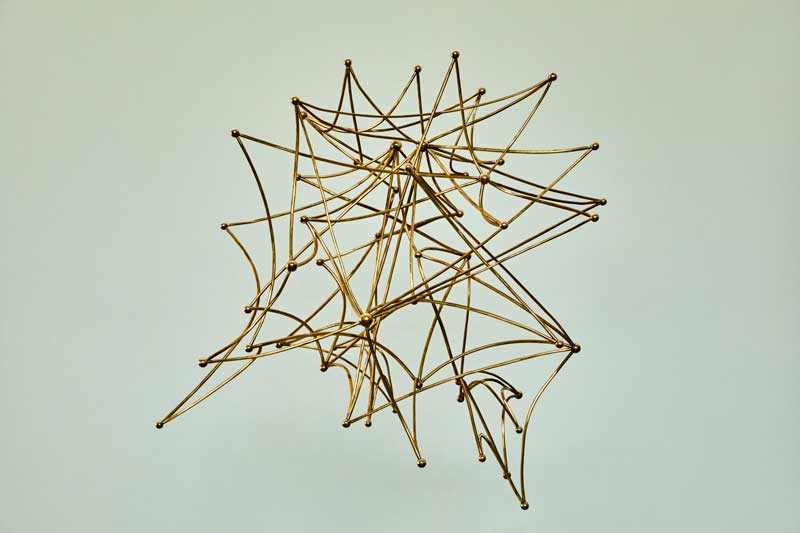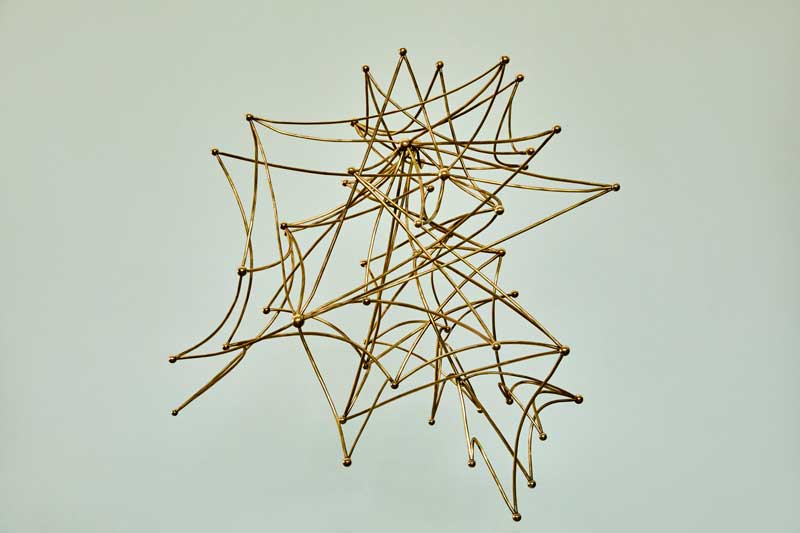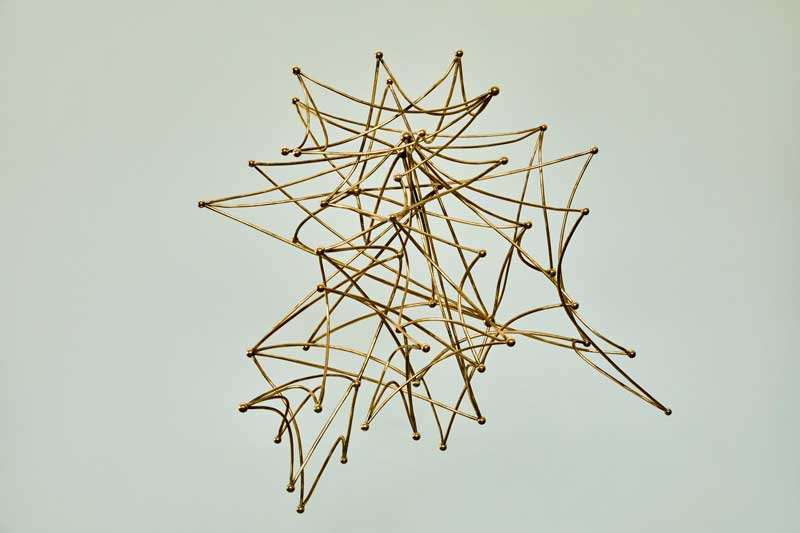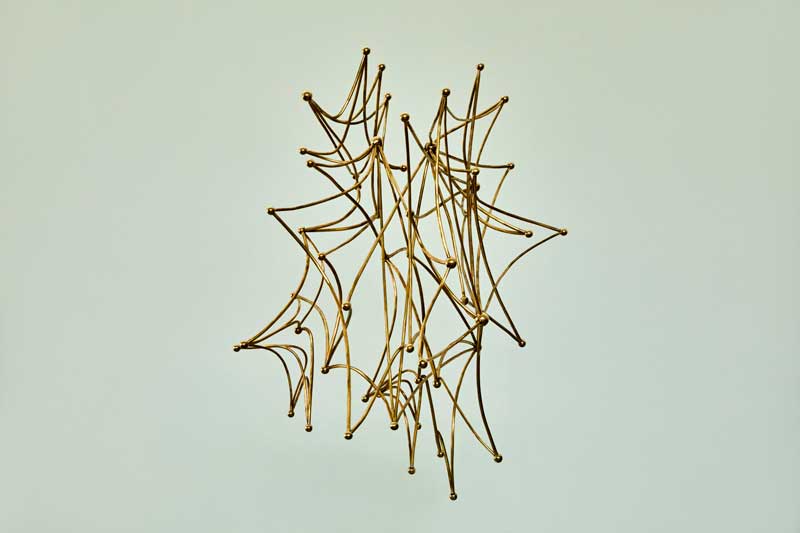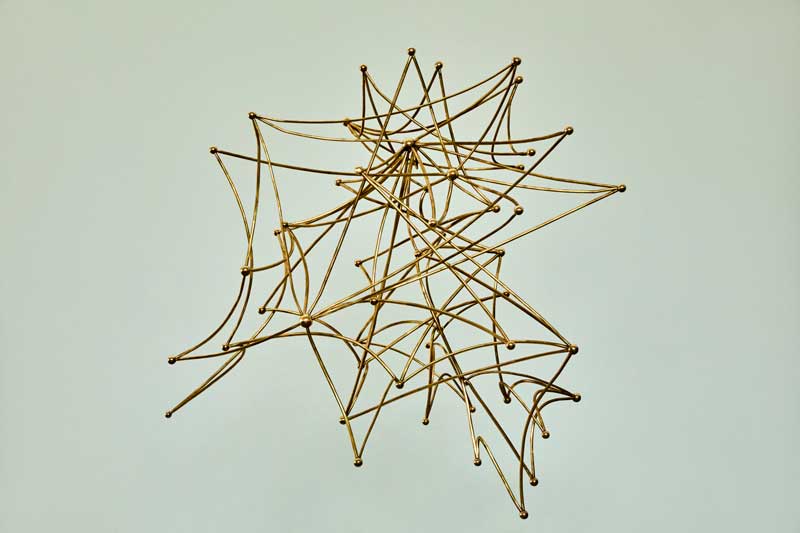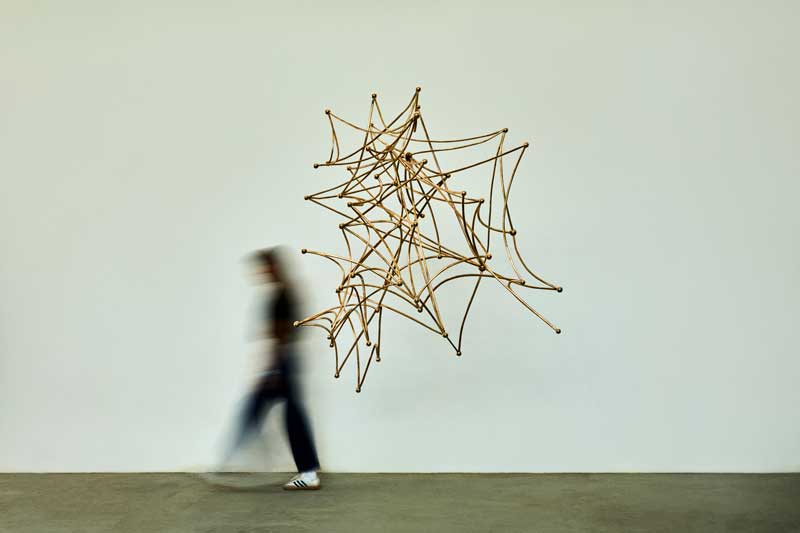Mauro Martino, with "Atomic Reverberations", forges in bronze a material metaphor for scientific knowledge in the field of Artificial Intelligence. His radical choice of bronze—ancestral, durable, handcrafted—constitutes an act of cultural resistance: it reclaims digital outputs from their ephemeral "liquidity," crystallizing algorithmic abstraction into a unique, tangible form.
Precisely polished to a reflective sheen, representing significant scientific papers in LLM research
Intentionally rough and crude, symbolizing algorithmic opacity in AI relationships
The spherical nodes, precisely polished to a reflective sheen, represent the most significant scientific papers in the field of LLM, articles "written by humans for humans." They embody collective victories in our understanding of the world, solid and transparent in their intellectual origins.
The connecting rods, in contrast, remain intentionally rough, crude, sometimes even chipped. This material choice symbolizes the algorithmic opacity defining the relationships between nodes. Generated by AI models analyzing "similarity" within multidimensional latent spaces, these connections are inherently compromised and never fully decipherable. Their irregular surfaces allude to the impossibility of fully grasping the deeper reasons behind the associations made by artificial intelligence, highlighting their intrinsic uncertainty and ambiguity.
This formal dichotomy, smoothness versus roughness, human transparency versus algorithmic opacity, transforms the open structure (inspired by algorithmic sculpture masters such as Hans Arp, Norbert Kricke, Gego, Charles O. Perry, and Claire Falkenstein) into a material manifesto. It does not celebrate technological omnipotence but rather unmasks its fundamental fragility and alienation from direct human logic. Here, AI is not a "creative" gadget but a conceptual tool with ambivalent implications: a collaborator translating abstract data into spatial geometry whose inner "logic" remains opaque, rough like its bronze connections.
The intentional roughness of the bronze rods honors the warnings of thinkers like James Bridle, who advocate interrogating technology in its opacity rather than merely celebrating its efficiency.
Thus, Atomic Reverberations navigates an ambiguous danger. It risks becoming an aesthetic trophy for the tech elite, who might admire the brilliance of the nodes while ignoring the critical roughness of the connections. Martino avoids this trap: even the polished nodes carry the darker seeds of progress (surveillance, bias, unemployment), while the rough rods tangibly embody the unease of knowledge mediated by algorithmic black boxes.
The "open and breathing" structure avoids portraying AI as omnipotent, emphasizing knowledge as a collective, imperfect process. Bronze, with its permanence and contrasting textures, challenges us: will the atomic "reverberations" of knowledge, filtered through algorithmic opacity, be liberating or dystopian? The sculpture does not provide answers but compels us to pose the question, merging ethical urgency with formal poetry in its smooth and rough material.
Visual Journey
